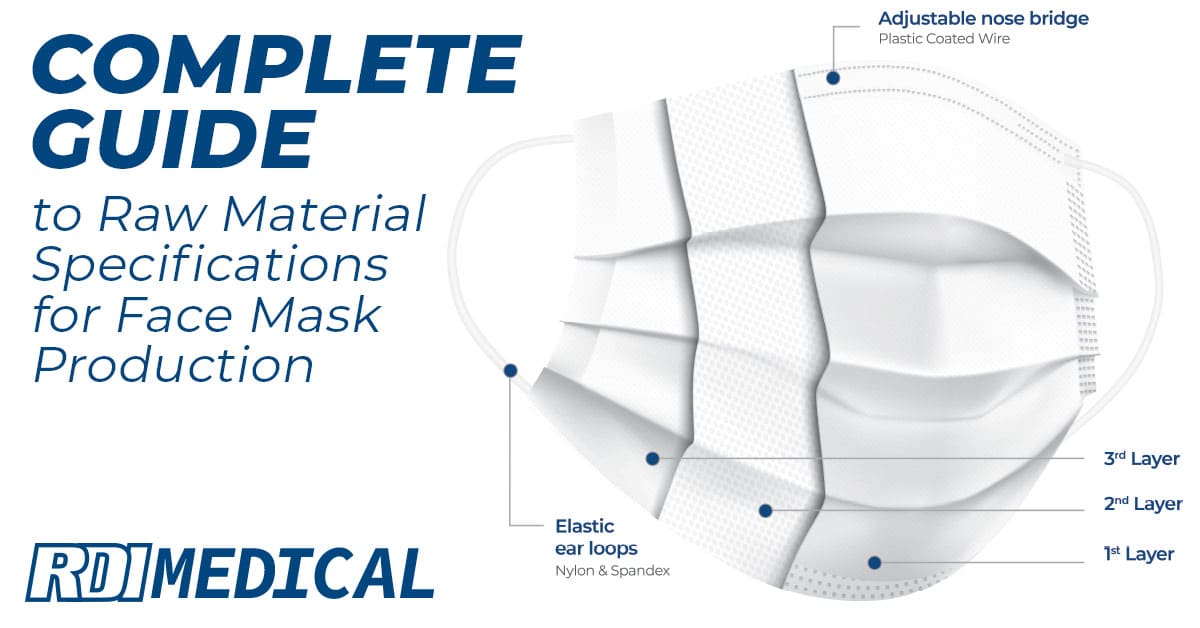
12
Jan
Complete Guide to Raw Material Specifications for Face Mask Production
Now more than ever, medical masks are being used every day for more than first responders. Those on the front lines need them during every moment at work. A quick trip to the grocery store or to the doctor requires a facial covering to prevent the spread of germs.
The market for medical face masks is expected to rise through 2026.
More manufacturers are stepping up to make more product to make ends meet. The companies making these masks need to use the best raw materials out there for making masks.
Continue reading to learn everything you need to know about raw materials used for face mask production.
Types of Raw Material Used in Protective Face Masks
It can be tough to figure out how to manufacture a face mask with the right materials to provide high-quality protection and comfort. Using the right elements in face mask production will make a world of difference in the level of protection that they will provide.
The materials that manufacturers use does matter in methods of protection being highly effective. A large supplier of our mask fabrics is Lydall, who produces high quality protective, filtration, and comfort layers for face masks. The quality of their industrial filtration materials outweighs those of their competitors making them our ideal supplier.
RDI Medical can help you specify the right materials for face mask production that have the proper filtration needed to make them effective.
The polypropylene materials rated better than others in testing. The layers of fine fibers that make up the material are better at blocking airborne particles from entering and exiting the respiratory system.
Unlike the abundance of medical masks that don’t meet the standards set by the government, they are materials used to make our masks that do actually work.

Outer & Inner Layer
In disposable face masks, medical masks, and KN95/N95 masks, you will find that the nonwoven spunbond polypropylene materials are ideal for the outer and inner layers of the mask.
The nonwoven spunbond polypropylene is a breathable material. This allows for splash resistance on the outer layer. It is useful as the inner layer because it is absorbent and whisks moisture away from the face.
Middle Layer
The middle layer between the two pieces of nonwoven spunbond polypropylene is made of a nonwoven meltblown fabric.
The meltblown fabric in mask production acts as the filtration mechanism between the layers of nonwoven spun-bonded polypropylene that helps to prevent the spread of germs.
In addition to that, you will find that it supplies shielding, oil absorption, and heat insulation. It is ideal for filtering air and liquid particles making it a good raw material to incorporate into mask making.
Masks without a filtration system cannot help to protect the mask wearer from the potential risk of infection. In some versions of the medical mask on the market, you may find that they incorporate a double-layered meltblown fabric for more support and protection.
This is seen in the KN95 that has a 5-ply make-up where more protection is necessary.
